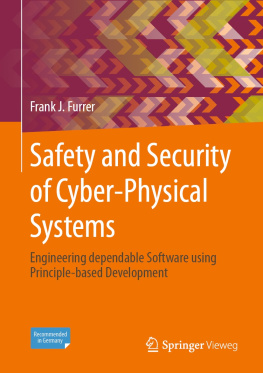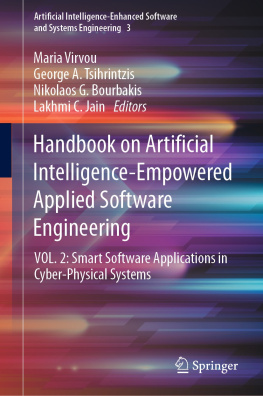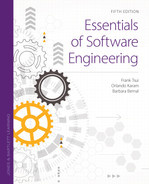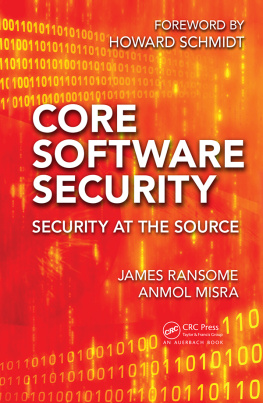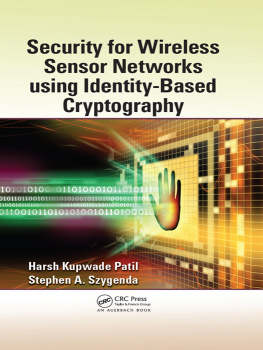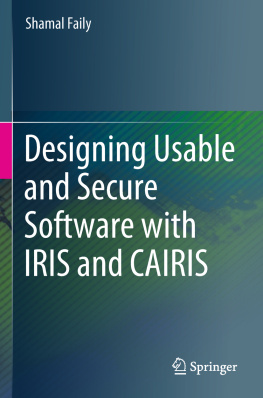Frank J. Furrer - Safety and Security of Cyber-Physical Systems: Engineering dependable Software using Principle-based Development
Here you can read online Frank J. Furrer - Safety and Security of Cyber-Physical Systems: Engineering dependable Software using Principle-based Development full text of the book (entire story) in english for free. Download pdf and epub, get meaning, cover and reviews about this ebook. year: 2022, publisher: Springer Vieweg, genre: Computer. Description of the work, (preface) as well as reviews are available. Best literature library LitArk.com created for fans of good reading and offers a wide selection of genres:
Romance novel
Science fiction
Adventure
Detective
Science
History
Home and family
Prose
Art
Politics
Computer
Non-fiction
Religion
Business
Children
Humor
Choose a favorite category and find really read worthwhile books. Enjoy immersion in the world of imagination, feel the emotions of the characters or learn something new for yourself, make an fascinating discovery.
- Book:Safety and Security of Cyber-Physical Systems: Engineering dependable Software using Principle-based Development
- Author:
- Publisher:Springer Vieweg
- Genre:
- Year:2022
- Rating:4 / 5
- Favourites:Add to favourites
- Your mark:
Safety and Security of Cyber-Physical Systems: Engineering dependable Software using Principle-based Development: summary, description and annotation
We offer to read an annotation, description, summary or preface (depends on what the author of the book "Safety and Security of Cyber-Physical Systems: Engineering dependable Software using Principle-based Development" wrote himself). If you haven't found the necessary information about the book — write in the comments, we will try to find it.
Cyber-physical systems (CPSs) consist of software-controlled computing devices communicating with each other and interacting with the physical world through sensors and actuators. A CPS has, therefore, two parts: The cyber part implementing most of the functionality and the physical part, i.e., the real world. Typical examples of CPSs are a water treatment plant, an unmanned aerial vehicle, and a heart pacemaker. Because most of the functionality is implemented in software, the software is of crucial importance. The software determines the functionality and many CPS properties, such as safety, security, performance, real-time behavior, etc. Therefore, avoiding safety accidents and security incidents in the CPS requires highly dependable software.
Methodology
Today, many methodologies for developing safe and secure software are in use. As software engineering slowly becomes disciplined and mature, generally accepted construction principles have emerged. This monograph advocates principle-based engineering for the development and operation of dependable software. No new development process is suggested, but integrating security and safety principles into existing development processes is demonstrated.
Safety and Security Principles
At the core of this monograph are the engineering principles. A total of 62 principles are introduced and catalogized into five categories: Business & organization, general principles, safety, security, and risk management principles. The principles are rigorous, teachable, and enforceable. The terminology used is precisely defined. The material is supported by numerous examples and enriched by illustrative quotes from celebrities in the field.
Final Words
In a cyber-physical systems safety and security, any compromise is a planned disaster
Audience
First, this monograph is for organizations that want to improve their methodologies to build safe and secure software for mission-critical cyber-physical systems. Second, the material is suitable for a two-semester, 4 hours/week, advanced computer science lecture at a Technical University.
This textbook has been recommended and developed for university courses in Germany, Austria and Switzerland.
Frank J. Furrer: author's other books
Who wrote Safety and Security of Cyber-Physical Systems: Engineering dependable Software using Principle-based Development? Find out the surname, the name of the author of the book and a list of all author's works by series.

